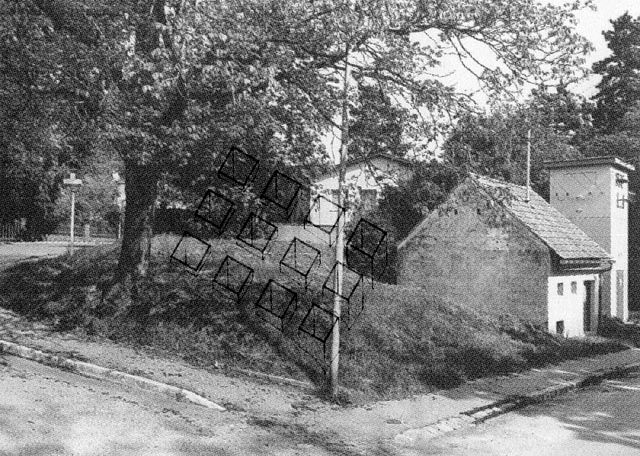Barbara Holub
:
Monument For Nikolaus Seyringer in Matzen
Back
Information
A monument was supposed to be erected to commemorate Nikolaus Seyringer (ca. 1360–1425), a mystic and Abbot of Melk, on a sloping green in Matzen. Barbara Holub won the competition to find a design with her concept for a shrine of twelve concrete cubes.
The project was, however, never realised.
On a rather inconspicuously located piece of ground, between the town’s arterial road and a street that bears the name of the man commemorated, a monument was to be erected to the memory of Nikolaus Seyringer (circa 1360-1425), mystic and Abbot of Melk. The few things by Nikolaus von Seyringer that have come down to us tend to only lead to conjecture and therefore allow a variety of ideas about the age in which he lived to flourish. For example, the philosophy of Nicolaus Cusanus, the 'coincidentia oppositorum': in its individual essence the world admits of immeasurable variety, yet forms a unity as a whole. At that time there was no division between science, art and religion. For the medieval human being, the world did not represent a scientific phenomenon, but rather a fact of faith. Relics from that time accumulate when searching for his person, his teaching and his life – like the relics of famous clergymen who only give hints about things in the form of signs ... That is how the concept of the shrine was developed, consisting of twelve individual parts, reminding one of the fragmentary. The twelve concrete cubes have been sunk into the earth, yet in such a way as to make the whitewashed surfaces of the sides of the outermost cubes visible form the street. In the cubes, which are covered with glass plates, individual wooden letters have been placed to create an idea of his attitude of mind, together with information about him and a portrait (a silkscreen print of an engraving). The spaces between the cubes (60cm x 60cm x 75cm) amount to 40cm, so that one can walk between them and become absorbed in each one.
(Barbara Holub)

